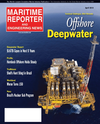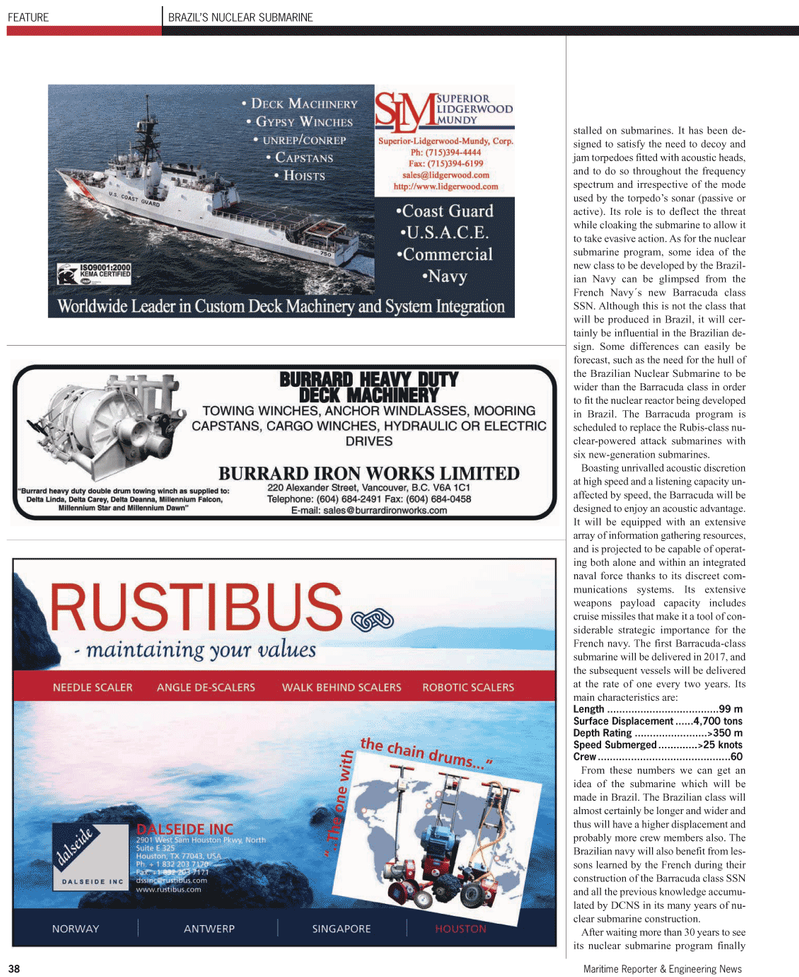
Page 38: of Maritime Reporter Magazine (April 2, 2010)
Read this page in Pdf, Flash or Html5 edition of April 2, 2010 Maritime Reporter Magazine
stalled on submarines. It has been de- signed to satisfy the need to decoy and jam torpedoes fitted with acoustic heads, and to do so throughout the frequency spectrum and irrespective of the mode used by the torpedo’s sonar (passive or active). Its role is to deflect the threat while cloaking the submarine to allow it to take evasive action. As for the nuclear submarine program, some idea of the new class to be developed by the Brazil- ian Navy can be glimpsed from the
French Navy´s new Barracuda class
SSN. Although this is not the class that will be produced in Brazil, it will cer- tainly be influential in the Brazilian de- sign. Some differences can easily be forecast, such as the need for the hull of the Brazilian Nuclear Submarine to be wider than the Barracuda class in order to fit the nuclear reactor being developed in Brazil. The Barracuda program is scheduled to replace the Rubis-class nu- clear-powered attack submarines with six new-generation submarines.
Boasting unrivalled acoustic discretion at high speed and a listening capacity un- affected by speed, the Barracuda will be designed to enjoy an acoustic advantage.
It will be equipped with an extensive array of information gathering resources, and is projected to be capable of operat- ing both alone and within an integrated naval force thanks to its discreet com- munications systems. Its extensive weapons payload capacity includes cruise missiles that make it a tool of con- siderable strategic importance for the
French navy. The first Barracuda-class submarine will be delivered in 2017, and the subsequent vessels will be delivered at the rate of one every two years. Its main characteristics are:
Length .....................................99 m
Surface Displacement ......4,700 tons
Depth Rating ........................>350 m
Speed Submerged.............>25 knots
Crew............................................60
From these numbers we can get an idea of the submarine which will be made in Brazil. The Brazilian class will almost certainly be longer and wider and thus will have a higher displacement and probably more crew members also. The
Brazilian navy will also benefit from les- sons learned by the French during their construction of the Barracuda class SSN and all the previous knowledge accumu- lated by DCNS in its many years of nu- clear submarine construction.
After waiting more than 30 years to see its nuclear submarine program finally 38 Maritime Reporter & Engineering News
FEATURE BRAZIL’S NUCLEAR SUBMARINE

 37
37

 39
39
